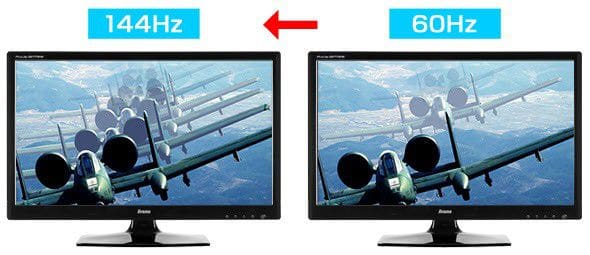 A refresh rate is the number of images that refresh on your computer per second. So, for example, if the refresh rate is 60 Hz, your display is updating 60 times every second. The higher the refresh rate, the smoother the picture. While it might not matter so much if you’re just searching away on Google, it does matter for activities such as gaming.
A refresh rate is the number of images that refresh on your computer per second. So, for example, if the refresh rate is 60 Hz, your display is updating 60 times every second. The higher the refresh rate, the smoother the picture. While it might not matter so much if you’re just searching away on Google, it does matter for activities such as gaming.
A refresh rate was more significant on older monitors, as a low rate could mean the user would see the image flickering on the screen. While this doesn’t happen on modern monitors, there’s always room for a smoother picture.
Your monitor determines just how far you can go with improving your refresh rate. So, if you’re looking for a new monitor, it’s something to take into account. Of course, that doesn’t mean you should leave out other aspects, such as viewing angle, colour accuracy, and response time. But certainly, you should look to get the highest refresh rate as possible without compromising these other features.
Most modern PCs choose the highest refresh rate possible for the monitor being used. This doesn’t always happen automatically, however. So, you may need to do it manually. Below are the steps you need to take to change your monitor’s refresh rate.
The Steps
- Right-click anywhere on the desktop and select Display Settings
- Navigate to Advanced Display Settings
- Click on Display Adapter Properties
- Select the Monitor tab
- Pick the Refresh Rate you want to verify your selection, click on Apply, and OK
Once you’ve applied each of these steps, your monitor should start using your new refresh rate. The rates you have available to choose from will be dependent on your monitor, the resolution of your device, and your graphics adapter.
If a higher refresh rate is supported by your display, but you don’t see an option to select it, you may need to reinstall the latest graphics driver. You could choose a lower resolution, as sometimes a display can support higher refresh rates on lower resolutions. If you’re only making a minimal change to your refresh rate, and the refresh rate reverts back to the lower rate, this isn’t unusual, and so you’d only be wasting your time trying to fix it.
How High is Too High?
In general, the higher the refresh rate, the better the experience. On the other hand, a lower refresh rate often leads to screen flickering, as well as headaches and eye strain. In reality, a 60Hz refresh rate is sufficient for basic computing, such as typing up a few documents or accessing the Internet through a VPN. There might be some jitters while you’re moving the cursor around, but it’s an optimal rate. If you do fall below 60Hz, however, you’ll experience some issues.
Of course, if you’re a gamer, a higher refresh rate will significantly improve your gaming experience. However, that doesn’t mean there aren’t other things you should consider. Portable monitors will be the next trend, for example, so that’s something to bear in mind when looking to buy a new monitor to improve your refresh rate. You’ll also want to make sure you’ll be able to get the same Frames Per Second (FPS) as your refresh rate when gaming. If your refresh rate is far higher than your FPS, you could experience something called screen tear. This occurs when your refresh rate and frame rate aren’t properly synced, and you see two frames simultaneously.
Wrap Up
Of course, the higher refresh rate a monitor has, the more expensive the monitor. Not only that, but when you reach speeds of 240Hz and over, you might find that other features are decreased to make way for the higher refresh rate. These include general build quality, viewing angles, and colour accuracy. So, you should evaluate which aspects are important to you. Just make sure you include refresh rate in the mix, and you’ll have a better display quality than ever before.
